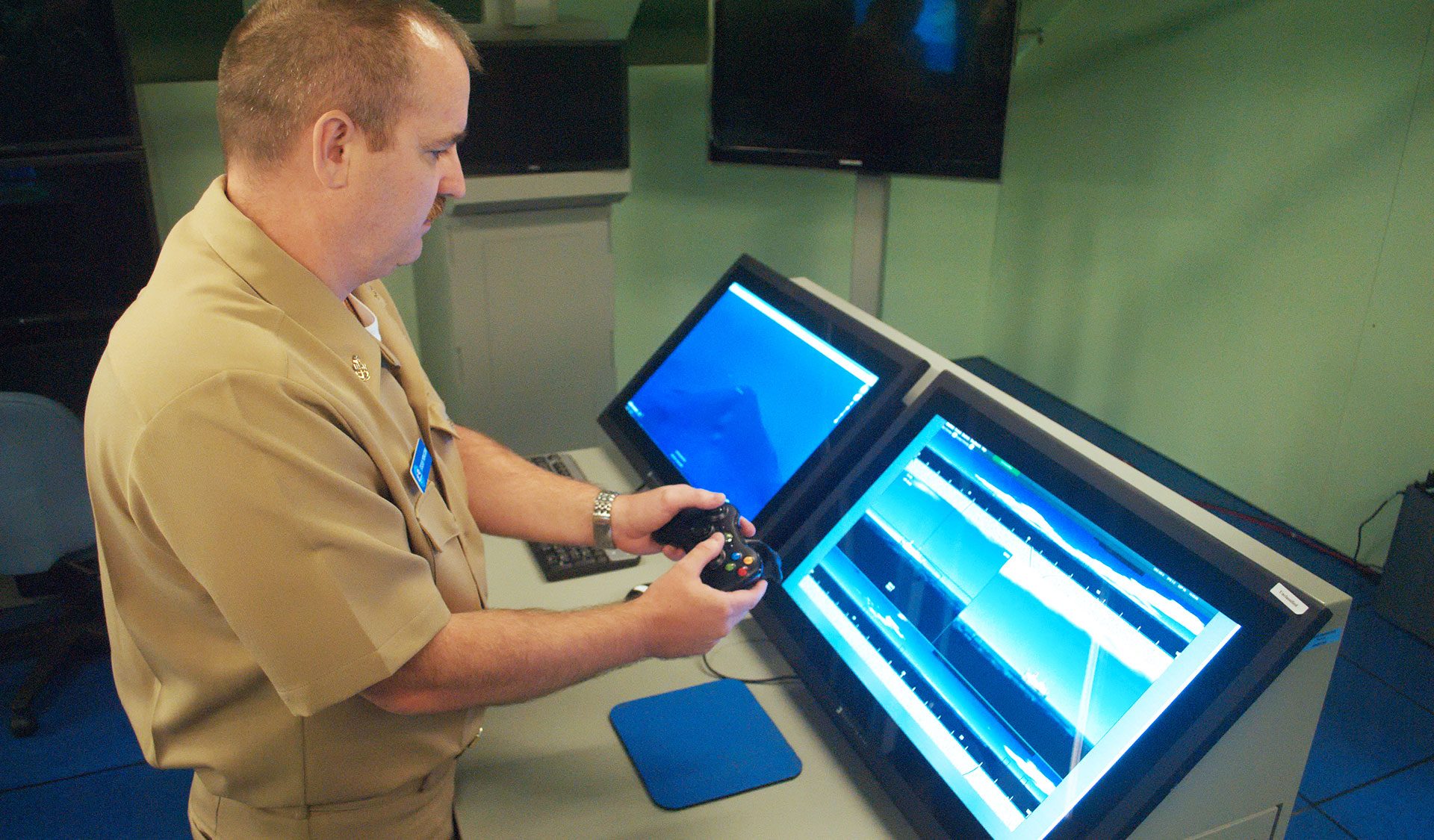You probably know Area 51 as the Air Force’s famed Nevada-based testing ground. What you may not know is the Navy’s submarine community is experimenting with its own version of futuristic technology in a small mock control room near Washington D.C.
Dubbed ‘Area 51,’ Lockheed Martin and Navy researchers test how commercial software and hardware can be applied to Los Angeles and Virginia-class submarine control rooms and wardrooms.
So how did Lockheed Martin’s Area 51 come about? Around four years ago, Navy and industry teams working in a classified research lab in Manassas, Virginia, were looking at ways to apply technology like multi-touch tables, tablets, Xbox controllers, Kinect and Google Earth to advance the systems already onboard a submarine. While the technology was off-the-shelf, the projects were kept secret. Before long, Lockheed Martin engineers started calling the space Area 51.
Here, tech-savvy sailors deeply familiar with submarine controls work alongside Lockheed Martin engineers to optimize and streamline technologies onboard Navy submarines. While the results of these projects are unlikely to rattle any alien conspiracy theorists, the developments are equally ground breaking when it comes to the speed at which proven technologies are introduced to the fleet. The Navy’s hunt for solutions to technical challenges include everything from video gaming to smart phones.
Area 51 flips the concept of developing solutions from scratch on its head by asking, ‘How might we integrate what already works?’
“If we have a good idea, we bring it in here and try it out. It may work, it may not,” said Jacob Shultz at Lockheed Martin. “And because we try, we get the best, proven solutions to the fleet faster. The point is we have an environment in which we can do more than talk about the art of the possible, in here we make it happen.”
So what’s next for Area 51? With an increased emphasis on the world’s undersea operational environment, there will be plenty.
Game-Changing Tech

Open-Source Innovation

Do you ever get lost in the amount of papers stacked on your desk or workstation? Imagine what a submarine commander has to sift through on any given day. And remember, that wardroom space is also your conference room, your dining hall and your recreation area. In Area 51’s mock wardroom, their table resembles something you see in high-tech futuristic movies: a large multi-touch collaboration surface. Imagine various command center data windows called forth with a touch, resized, rotated and “pushed” down the table to support the discussion. And when it’s chow time, not to worry, the table is spill proof. From Area 51 to the submarine fleet, the future has arrived.
WHAT'S YOUR AREA 51 IDEA?
Does it seem redundant to use two remotes to turn on your TV? Couldn’t your garage door just open by itself when it senses the car is running? Lockheed Martin’s Area 51 represents home-grown innovation from tech-savvy consumers who grew up in the digital age. Just about everyone can put these practices to test in their everyday life. So here’s your chance to take a stab at solving real-world problems with simple solutions. Share your ideas with us on Facebook or Twitter.




